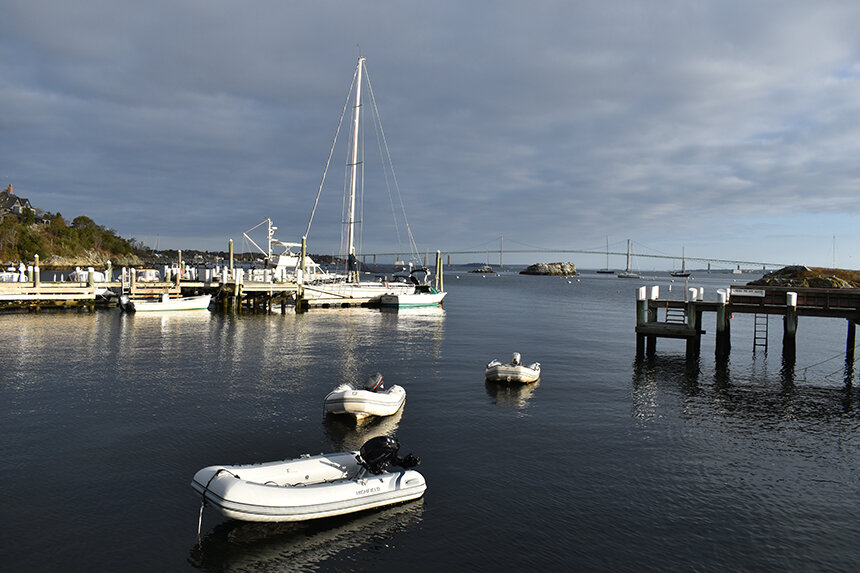Ocean State Needs to Protect Its Waters From EPA Rollback
September 23, 2019
Earlier this month the Trump administration got the ball rolling on a Clean Water Act overhaul that could put U.S. waterways at risk.
The Clean Water Act requires federal permitting for anyone conducting business — think agriculture and industrial production — that could pollute waters of the United States (WOTUS).
In 2015, the Obama administration added the Clean Water Rule to the 1972 act, expanding on the definition of WOTUS to include temporary and isolated waterways.
“The Obama rule in 2015 was designed to limit pollution in about 60 percent of the countries waterbodies, and not only that, but it was also designed to protect drinking water sources for a huge amount of the U.S.,” said Heather Govern, vice president and director of the Conservation Law Foundation’s Clean Air and Water Program. “So the idea was to extend the federal authority on this because many of the upland waterbodies don’t have protection; these temporary tributaries, streams, and wetlands have been just subjected to pollution from agriculture and industry for decades and decades.”
Since 2017, the Environmental Protection Agency (EPA) and the Trump administration have decried the rule as an abuse of power, saying changes will “remove Washington bureaucrats from making ambiguous decisions on land which they aren’t familiar with” and claiming the Obama-era rule stifled local economies and made opening, say, a new factory much more arduous.
“Today, EPA and the Department of the Army finalized a rule to repeal the previous administration’s overreach in the federal regulation of U.S. waters and recodify the longstanding and familiar regulatory text that previously existed,” EPA administrator Andrew Wheeler is quoted in a Sept. 12 press release. “Today’s Step 1 action fulfills a key promise of President Trump and sets the stage for Step 2 — a new WOTUS definition that will provide greater regulatory certainty for farmers, landowners, home builders, and developers nationwide.”
Before being named EPA administrator, Wheeler worked in a law firm that represented coal interests and lobbied against the Obama administration’s environmental regulations. He is a critic of limits on climate emissions and the U.N.’s Intergovernmental Panel on Climate Change.
While polluting obvious sources of drinking water and large bodies of water will still be prohibited, under the Trump administration’s definition of WOTUS, pollution from stormwater runoff and groundwater near farms and factories could become a major issue.
“You’ve got a real possibility that those industries are going to cause chemical runoff, stormwater runoff that hits these bodies of water that are no longer under protection,” Govern said. “Plus, all of our nation’s waters are connected, and the streams and tributaries and wetlands often run into larger rivers, larger lakes, and there is a need to protect the smaller water bodies in order to protect the larger ones.”
Rhode Island currently has 285 impaired waterways, or bodies of water that fail to meet specific water-quality standards with regards to its intended use and classification.
The percentages of impaired waterways, according to Jane Sawyer from the Rhode Island Department of Environmental Management (DEM), are as follows: 59 percent of lake and pond acres, 53.2 percent of rivers and stream square miles, and 35.7 percent of estuarine square miles.
“That’s a lot of impaired waterways for such a small state,” Govern said.
For Johnathan Berard, state director of Clean Water Action’s Rhode Island chapter, the fear of more polluted waters is one problem that this repeal could exacerbate. Another problem is degrading the critical infrastructure that wetlands create in terms of flood control.
“Because some wetlands will be removed from protection, that they could be paved, developed, filled in, etc., and we know that wetlands are critical infrastructures in preventing flooding,” Berard said. “So as climate change worsens and has a bigger impact in our state, we need to protect wetlands and reestablish wetlands, and not allow protections to be undone.”
To keep Rhode Island’s wetlands — and all of the state’s water systems — safe, we need to ensure that 2015 recommended updates to Rhode Island’s Freshwater Wetlands Act, which was originally put into law into the 1970s, are accepted, according to Topher Hamblett, Save The Bay’s director of advocacy and policy.
“During a 2015 revision of the law, the task force made some recommendations, including that DEM be given more staff to actually implement the new law, because the new law expands the areas that DEM can regulate,” Hamblett said. “The hitch is that here we are in 2019 and the regulations that are really the meat of wetlands regulations here in Rhode Island are still in draft form.”
In the summary of the proposed draft revisions to the state’s Freshwater Wetlands Act, it notes that the revisions, “Expands the jurisdiction of state agencies and requires the promulgation by rule of standards for wetland buffers and setbacks. The legislation recognizes the important values of buffers in the protection of the wetland resources and the benefits they provide.”
A workshop for the public to comment on the draft of these changes was held Sept. 11. Hamblett said he hopes the revisions are accepted, as they will secure stronger protection for Rhode Island’s wetlands during a time when federal support is dwindling.
“The Trump administration can try to do what it wants to on a national level,” he said. “But meanwhile for Rhode Island, we need to focus on our Freshwater Wetlands Act because some of the same waters that the federal Clean Water Rule was protecting, and will no longer, are at stake here.”



